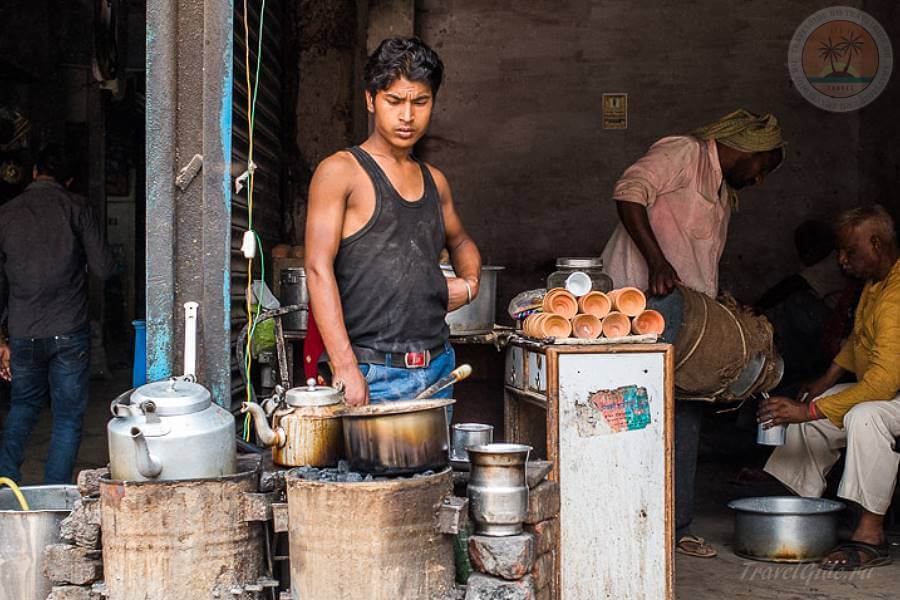
Burial in India: from death to cremation
When death comes - white clothes, rice in the mouth and a purifying fire...
The followers of Hinduism, the main religion of India, adhere to the belief in life cycles through reincarnation. Therefore, the funeral in India and all the rituals prepare the deceased for life in a new incarnation. In addition, Hindus hope to get out of the circle samsara. A funeral in India is a positive atmosphere and a kind of transfer of positive karma to the deceased, as well as a guarantee of his successful rebirth.
1. How they bury in India
Funeral traditions of different countries and peoples have both much in common and many differences. Hinduism, a heterogeneous religious movement, in itself also has significant differences in the process of parting and seeing off a person on the “last journey”.
Strictly speaking, in Hinduism, the death of a person, most often, is not a "one-way ticket." Death is just another round in the reincarnation of the immortal soul.

So, according to most Hindu traditions, only a male family member can perform posthumous rites. The posthumous Hindu rites do not include ablution and the first farewell.
However, India is so big that circumstances and even regional transformation of religious and cultural traditions sometimes allow women to participate in them.
As a rule, the ceremonial washing of the deceased is performed by women in the family, and the action itself takes place immediately after death. After bathing, the deceased puts on cotton clothes, which can be decorated with family signs.
The deceased must be dressed in new white clothes. If the deceased is a married woman whose husband is still alive, or an unmarried young woman, then the color of the clothes will be red or yellow.
The body of the deceased is placed on a stretcher and showered with flowers. The mouth of the deceased is filled with rice so that his soul is nourished, and coins are put into each palm. Instead of rice, if possible, a few drops from the main river of India, the Ganges, are dripped into the mouth of the deceased. Well, coins can close the eyes of the deceased.
Cremation or burial?
Cremation is the most widespread posthumous tradition of Hinduism in India. However, burial is also practiced among Hindus. Few people know, but in certain Hindu traditions, burial is the accepted way for the final resting place of the body.

But even where cremation is required, not all bodies are subject to it. There are some exceptions to the rule. Some people do not need to be cleansed by fire. Such people include sadhas (yogis, ascetics and saints), pregnant women, fatal cobra bites, albinos, lepers, and children under 10 years of age.

Often their bodies are brought by boat to the middle of the Ganges and lowered into the water, tying heavy stones to their feet. Everything is logical. After all, cremation is essentially a cleansing, and if a person was “clean” during his lifetime, then there is nothing to clean.
When is the cremation?
In Hinduism, the procedures for the last commemoration and farewell are usually made within a day after death. But, of course, there are exceptions, taking into account the circumstances of the death or the individual capabilities and needs of the family of the deceased.

This religious ceremony is simple and respectful, and usually only the immediate family takes part. Mantras and prayers are read both during and after the bath. The mantras themselves depend on the specific religious tradition adopted in the family of the deceased.
After ablution, the first farewell, the last commemoration and the reading of mantras, the rite of cremation is performed.
Source 2Indian city where they burn on the river: Varanasi
Almost every culture and religion has a place of pilgrimage. In Russia, Orthodox Christians go to the Holy Dormition Pskov-Caves Monastery or to the island of Valaam, in Mexico there is the Basilica of the Holy Virgin of Guadalupe - a shrine of the Roman Catholic Church, among Muslims, without compromise, the holy city of Mecca in Saudi Arabia.

Well, for the followers of Hinduism, such a place is Varanasi city, or Benares, as it was called in the old days. Indians go there for two reasons.
First is a ritual bath in the Ganges. And they are not embarrassed by the dirt and unsanitary conditions of this sacred river. Read more in the article "Why is India so dirty: garbage, dirt, stink and animals..."
Second "pretty good reason" is death person.
What does the city of Varanasi on the Ganges River mean for Hindus?
The main river in India where the dead are burned in huge numbers is called Ganges. And although the Ganges River has a length of more than 2700 km, its waters are considered especially sacred in the city. Varanasi.

The point is that Hindus believe that the city lies on the trident of Shiva, and only in this place the Gods can speak with the dying. In general, regardless of social status, gender, health and age, every self-respecting adherent of Hinduism wants to bathe in the waters of the sacred Ganges at least once in his life.
The main motivation for making a pilgrimage - sometimes the last one - is moksha or the rescue. This means liberation from the cycle of successive reincarnations and exit from the circle samsara.
Fire frees the immortal soul from the fetters of the mortal body. This is the end of the journey of lives in search nirvana, that's why they burn bodies in India. Cremation at sacred ghats in close proximity to the river offers the possibility of salvation.
Ghats of Varanasi: how Hindus are buried on the Ganges
Grats are stone steps leading to the Ganges. In Varanasi, you can visit dozens of ghats of varying importance and popularity. The most famous of them Manikarnika And Harishchandraserve as a cremation site. It is enough to go to the roof of any nearby building, to any hotel or restaurant overlooking the Ganges and take a good look around to find them without any problems.
Near the crematorium there are buildings for people awaiting death. This is a kind of gests for the dying. A bit like our hospices. Some wait months, others a few days. On average, people spend no more than two weeks in them. After death, the body is wrapped in cloth and placed on a wooden stretcher near the Ganges.

Varanasi crazy city in India, where the bodies of the dead are burned on the river. Why crazy? Nowhere else is life intertwined with death so clearly and so calmly, without tantrums, crying and nerves. This is a place where you can get used to death.
Be careful and see which hotel you are booking or where you are going to have dinner. Your cafe may find itself in an alley where funeral processions take place. For example, the popular restaurant Blue Lassi, recommended by guides, is located right next to the main path leading to the place of burning corpses.
Imagine that you are on vacation. You take pictures, have fun in good company, joke, music plays, and you really drink the best lassi (a refreshing drink that comes from Punjab). Suddenly, a couple of meters from you, in fairly short, and also regular, intervals, funeral processions begin to appear.

However, the locals do not react to this in any way. The Hindu who made lassi for you is already making it for other tourists. The seller who just offered you the freshest pav bhaji (Indian vegetable fast food), is trying to sell it to someone else, and the kids who ran after the plastic bottle are still running after it. Nothing changes. The living still have to live and do their thing.
Varanasi is a city in India where corpses are burned almost around the clock. The crematoriums located on the Ganges are open without interruption. Each of the ghats is capable of burning about 300 bodies each day.
3. Funeral in India: how Hindus pay tribute to the deceased
After the death of a person, a period of mourning begins in the family. According to tradition, food cannot be cooked in the house where the deceased lived before the cremation. The fire in the house of the deceased is not lit until the fire of the funeral pyre is extinguished. Some Hindus transfer this rule not only to the fire for cooking, but also to lighting and heating in the house.
For thirteen days, relatives and friends of the deceased visit his family and express their sympathy. Decorated and elaborate clothing is not welcome when visiting family. Women's clothing should cover both legs and arms.
Also, the color of mourning clothes in Hinduism is white, so black mourning clothes are out of place. Among the poor strata of the population, the color of clothing at mourning events is very arbitrary.
When visiting a family, you can bring some national dish appropriate for the occasion, as well as flowers.
Funeral in India namely antesti - sacred Hindu funeral rites will differ slightly depending on the place of residence of the family of the deceased, his caste and the characteristics of the religious trend of Hinduism.


